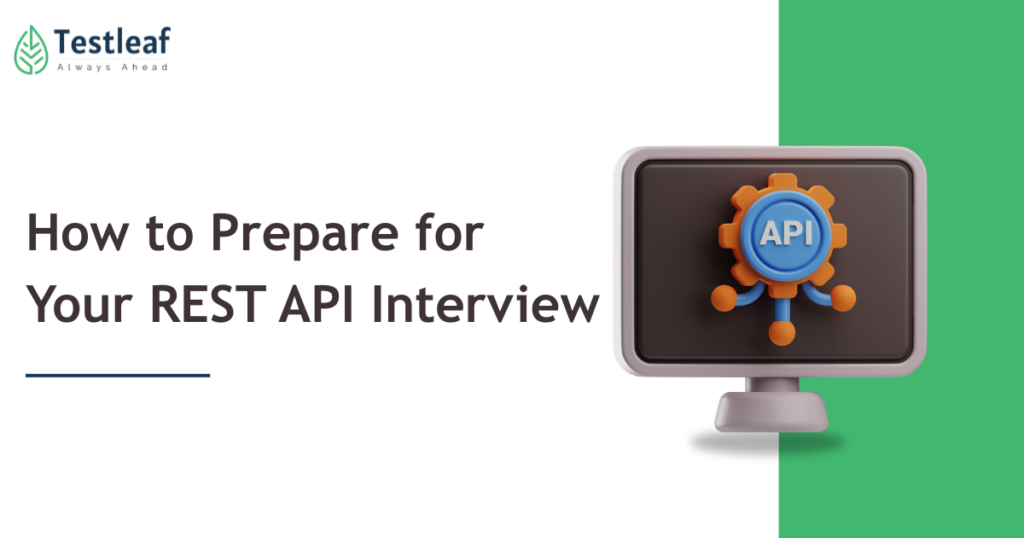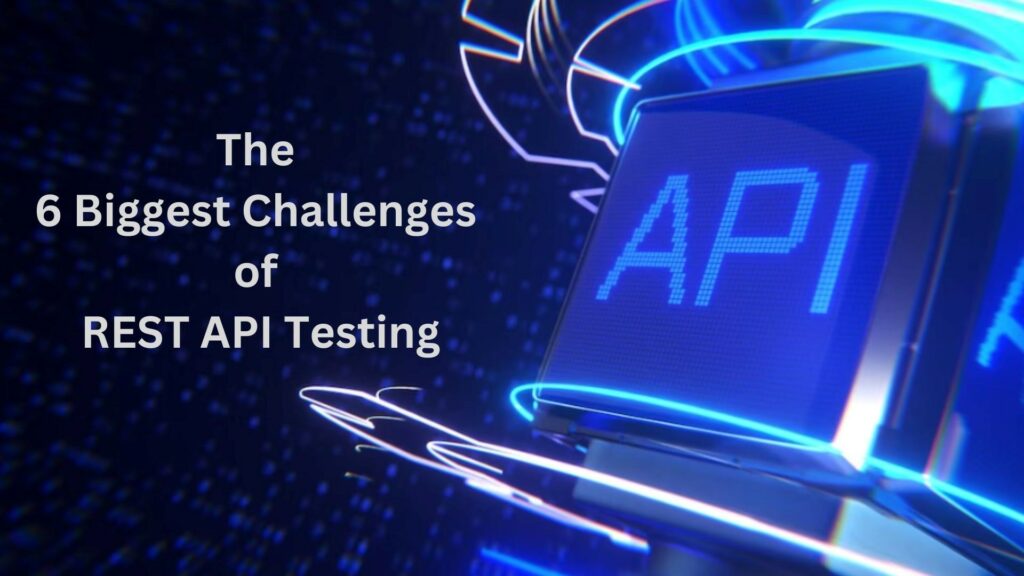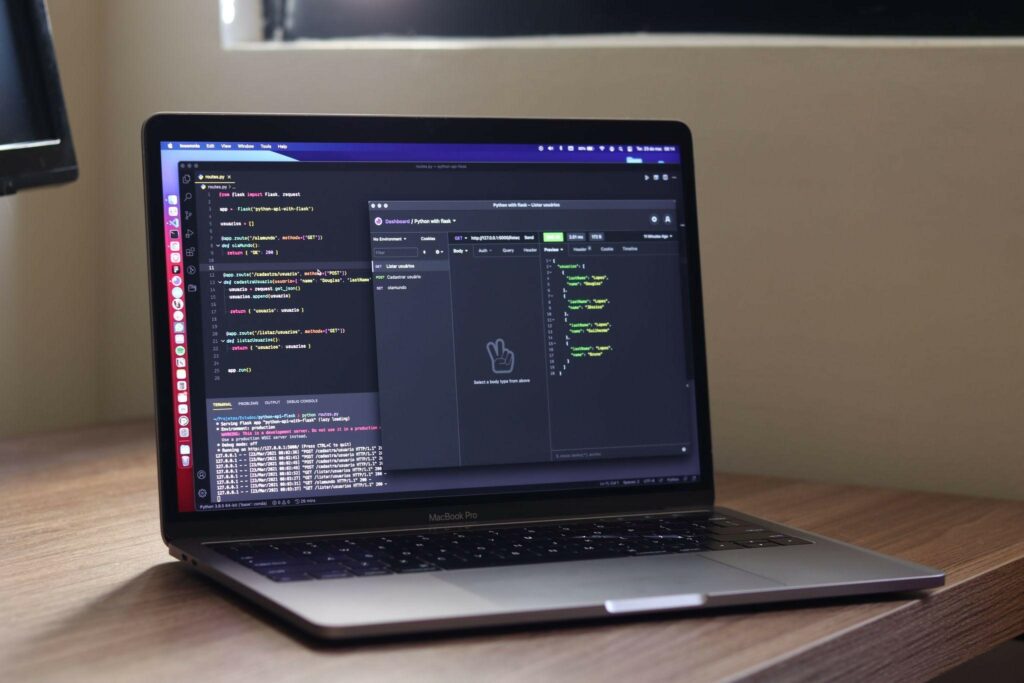Introduction
In today’s fast-paced tech ecosystem, REST APIs (Representational State Transfer) have become a critical component for enabling communication between client and server. Whether you are applying for an SDET, backend developer, QA automation engineer, or full-stack developer role, API knowledge is a must-have skill.
Companies look for professionals who can validate APIs effectively, understand how they work, and ensure reliability, performance, and security. This guide is your complete roadmap to help you prepare with confidence—covering both theory and hands-on skills.
1. Core Concepts to Master
What is a REST API?
- REST is an architectural style for building web services.
- It uses standard HTTP methods and is stateless.
- Resources are identified using URIs, and operations are performed using HTTP verbs.
Key REST Principles:
- Statelessness: Each API call is independent; server doesn’t store client context.
- Client-Server Separation: Frontend and backend are separate.
- Uniform Interface: Standard conventions for accessing resources.
- Cacheable: Responses should indicate whether they can be cached.
- Layered System: API might interact with other systems through layers.
Other Helpful Articles : Top 60+ API Testing Interview Questions for Fresher to Experience 2025
HTTP Methods Explained:
- GET: Read a resource
- POST: Create a new resource
- PUT: Update a resource (entire object)
- PATCH: Partial update
- DELETE: Remove a resource
- HEAD / OPTIONS: Meta information or capability discovery
Idempotency:
- Understand which methods are idempotent (GET, PUT, DELETE) and which are not (POST).
2. HTTP Status Codes – Master These
| Code | Category | Meaning |
| 200 | Success | OK |
| 201 | Success | Resource Created |
| 204 | Success | No Content (DELETE success) |
| 400 | Client Error | Bad Request |
| 401 | Client Error | Unauthorized |
| 403 | Client Error | Forbidden |
| 404 | Client Error | Not Found |
| 500 | Server Error | Internal Server Error |
| 502 | Server Error | Bad Gateway |
| 503 | Server Error | Service Unavailable |
3. Hands-On Tools You Must Know
Postman
- Create API requests (GET, POST, PUT, DELETE)
- Use environments, variables, and data files
- Write pre-request and test scripts using JavaScript
- Automate tests using Postman Collection Runner
- Integrate with Newman for CLI execution
RestAssured (for Java Testers)
- Fluent API to write readable test cases
- JSON/XML parsing and validation
- Schema validation with JSON Schema
- Integrate with JUnit/TestNG
- Attach Allure/Extent reports
given()
.baseUri(“https://api.example.com”)
.header(“Authorization”, “Bearer token”)
.when()
.get(“/users”)
.then()
.statusCode(200)
.body(“name[0]”, equalTo(“John”));
WireMock
- Simulate APIs for frontend or backend testing
- Stub APIs for different HTTP methods
- Mock delayed responses, error codes, etc.
- Useful when actual services are unavailable
4. Authentication & Authorization Types
- Basic Authentication – Use username and password in headers
- Bearer Token – Secure and widely used
- API Key – Passed via headers or query params
- OAuth 2.0 – Secure protocol with multiple flows (Authorization Code, Client Credentials)
- JWT (JSON Web Token) – Compact, URL-safe tokens for stateless authentication
Pro Tip: Understand OAuth2.0 flows and JWT structure (Header, Payload, Signature) for senior-level interviews.
5. JSON & XML Essentials
- Learn JSON structure (objects, arrays, key-value pairs)
- Use JSONPath to extract values from responses
- Validate response bodies with Schema Validation
- Handle nested objects and arrays
Example JSONPath:
- $.users[0].name – First user’s name
- $.data[*].id – All IDs in the array
6. Practical Test Scenarios
Prepare to:
- Send and validate CRUD requests
- Validate status codes, headers, cookies
- Handle negative tests (401, 400, 404, etc.)
- Perform data-driven testing
- Test rate limiting, retries, and error handling
- Validate JSON response structure, mandatory fields
- Write chained requests (extract token, reuse it)
7. Common REST API Interview Questions
Theory
- Explain RESTful API design.
- What is the difference between PUT and PATCH?
- How do you handle versioning in APIs?
- What are the REST API best practices?
- How do you secure REST APIs?
Practical
- Write a test to validate the status code and body.
- How to parse and assert a value from a nested JSON.
- Simulate a timeout and handle it in automation.
- How do you test an API that returns different responses randomly?
8. Automation & Real-World Strategy
- CI/CD Integration: Run tests using Jenkins, GitHub Actions
- Reports: Generate HTML reports using Extent/Allure
- Mocking: Use WireMock or MockServer for environments where real APIs are unstable
- Environment Switching: Use global variables and config files for switching base URLs
- Parallel Execution: Run collections/tests in parallel
9. Bonus Tips
- Keep up with tools like Swagger, OpenAPI, and Insomnia
- Learn to read Swagger docs to understand API specs
Conclusion
Acting a REST API interview requires more than just textbook knowledge. You need to combine conceptual clarity, hands-on experience, and problem-solving ability. Focus on mastering HTTP concepts, practice with tools like Postman and RestAssured, and work on real-time Rest API testing scenarios including negative testing, authentication, and automation framework design. With this preparation strategy, you’ll be interview-ready and well-equipped to contribute to any project involving APIs.
We Also Provide Training In:
- Advanced Selenium Training
- Playwright Training
- Gen AI Training
- AWS Training
- REST API Training
- Full Stack Training
- Appium Training
- DevOps Training
- JMeter Performance Training
Author’s Bio:

As CEO of TestLeaf, I’m dedicated to transforming software testing by empowering individuals with real-world skills and advanced technology. With 24+ years in software engineering, I lead our mission to shape local talent into global software professionals. Join us in redefining the future of test engineering and making a lasting impact in the tech world.
Babu Manickam
CEO – Testleaf





